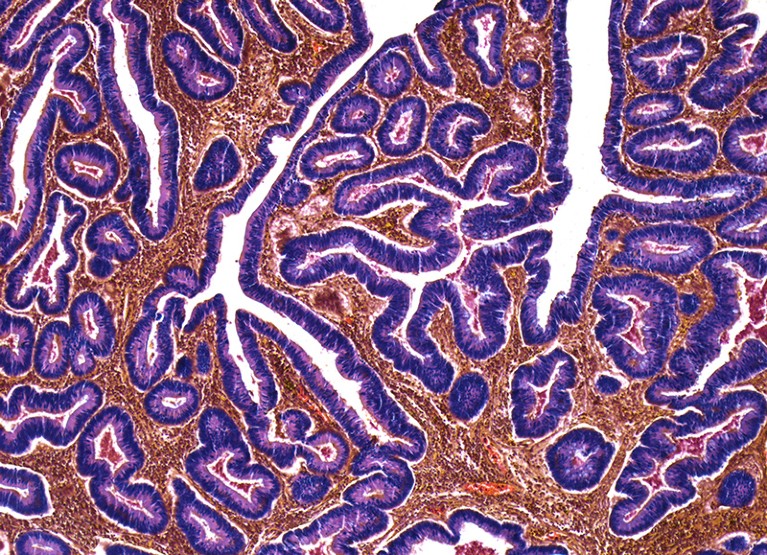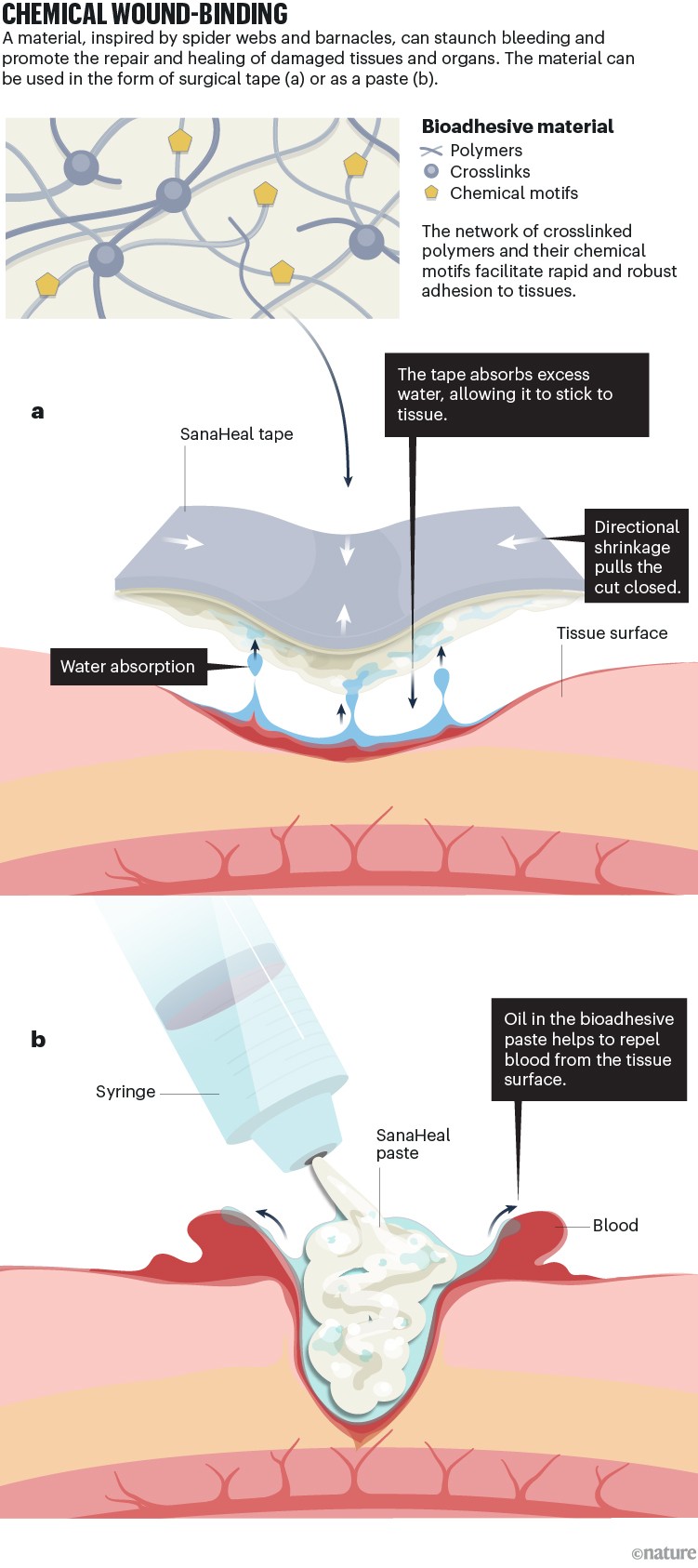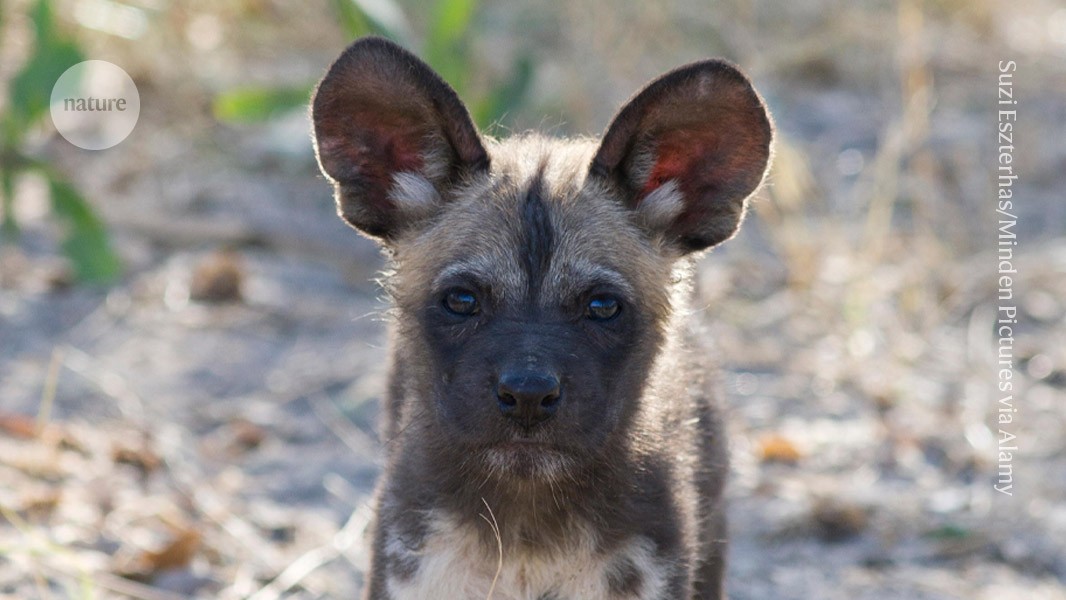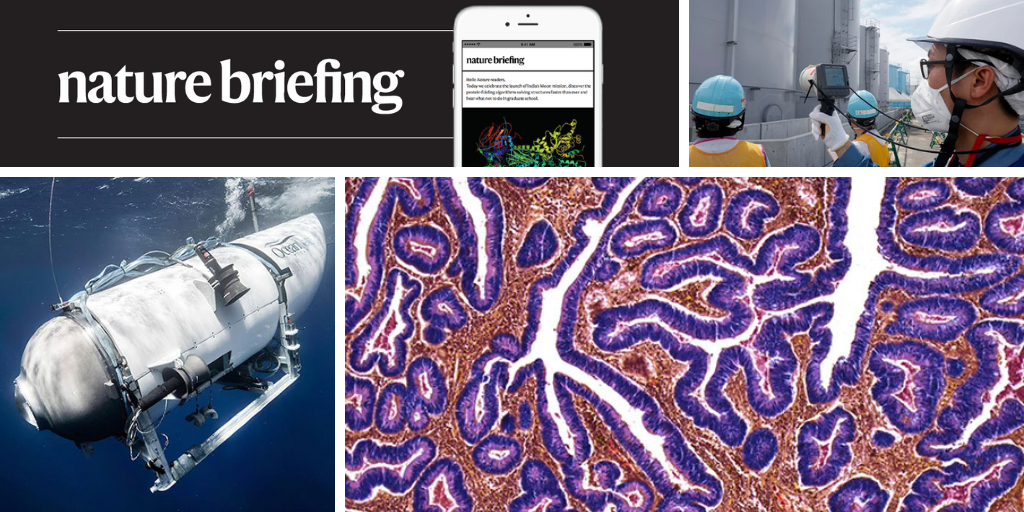Hello Nature readers, would you like to get this Briefing in your inbox free every day? Sign up here.

Colon cancer (pictured) is one of several types of cancer that has more severe effects on men than women.Credit: Steve Gschmeissner/Science Photo Library
The Y chromosome could be the reason that colorectal and bladder cancers are more aggressive in men and others who carry the chromosome. Researchers have found that the loss of the entire Y chromosome in some cells — which occurs naturally with age — raises the risk of aggressive bladder cancer and could allow bladder tumours to evade detection by the immune system. Separately, scientists identified a Y-chromosome gene in mice that bumps up the risk of some colorectal cancers spreading to other parts of the body by weakening connections between tumour cells. When the gene was deleted, tumour cells became less invasive, and were more likely to be recognized by immune cells. Together, the studies suggest that genetic factors — not just lifestyle — are responsible for the male bias that many cancers have.
References: Nature paper 1 & Nature paper 2
Rescuers are scrambling to understand what went wrong on OceanGate’s submersible vessel Titan, which went missing on 18 June while carrying five passengers to visit the wreckage of the Titanic. On research subs, some of the scientific equipment doubles as a safety system, explains oceanographer Peter Girguis. “I’m concerned that they overlooked some of the features that we build into research submersibles, because they struck them as costly or unnecessary, or uninteresting,” he says. It would be a bad idea to send a crewed sub after Titan, but “remotely operated robotic submersibles that work at 6,500 metres would be an ideal asset to get on site”, Girguis suggests. “The real challenge, of course, is how do you get out to this remote location in the Atlantic in time?”
Japan will soon start to slowly release into the Pacific Ocean water contaminated by the 2011 meltdown of the Fukushima Daiichi nuclear power plant. Treatment has removed 62 of the 64 radioactive elements almost entirely, but there are some unanswered questions about hydrogen-3 (tritium) and carbon-14. Some scientists suggest the risks are negligible. Discharging tritium-contaminated water is part of nuclear power plants’ usual operating procedure, notes environmental scientist Jim Smith. Others are concerned that tritium could concentrate in the food web. “Have the people promoting this going forward demonstrated to our satisfaction that it will be safe for ocean health and human health?” asks marine biologist Robert Richmond. “The answer is ‘no’.”
Features & opinion
Land-sparing could lessen farming’s impact on the environment without exacerbating harm elsewhere — and it’s cheaper than other approaches, write environmental economist Ian Bateman and conservation scientist Andrew Balmford. The most common conservation policies — land sharing, rewilding and organic farming — actually risk accelerating biodiversity loss by offshoring the problem, they argue. The approaches reduce crop yield, which drives up food imports and causes enormous environmental damage overseas. Land sparing involves joining up habitat patches alongside using yield-boosting methods in farmed areas. Governments must stop ignoring system-wide impacts to make better, evidence-based policy decisions, argue the researchers.
The 17 United Nations Sustainable Development Goals (SDGs) are at the heart of an international project that aims to end poverty and achieve equality while protecting the environment. World leaders agreed the goals in 2015 and set a 2030 deadline to achieve them. This year, at the half-way point, it looks likely that none of the goals and just 12% of the targets will be met. In September, world leaders will gather in New York City to come up with a rescue plan — and scientists are key to its success. A Nature editorial kicks off a series of articles on what needs to be done. “If there’s even a small chance that we can still achieve the SDGs by 2030, we need to seize it with both hands,” says the editorial.
When Algeria won its hard-fought independence from France, it also ejected the colonizers’ rocket launch site. France went looking for a new location, which had to be conveniently located near the equator. It turned to Devil’s Island, a ruthless French penal colony in French Guiana. Today the region is home to the Guiana Space Centre, the main spaceport of France and the European Space Agency. Ethonograper Karlijn Korpershoek explores how missions such as the James Webb Space Telescope came to be launched from this South American locale.
Infographic of the week

Credit: Alisdair MacDonald
Bioadhesive company SanaHeal has won the Spinoff Prize — an award from Nature Research and Merck for early-stage university spin-off companies. Standard bandages won’t stick to organs such as the liver. Sanaheal’s “duct tape for surgery” sticks and then shrinks inwards, pulling cuts closed and adding mechanical reinforcement that promotes wound healing. “Mechanistically, it does exactly the same thing that barnacle glues do,” says mechanical-engineer-turned-entrepreneur Hyunwoo Yuk. “This is true bioinspiration.” (Nature | 7 min read)







More News
African wild dogs with pleading eyes sparks rethink of dog evolution
Author Correction: Stepwise activation of a metabotropic glutamate receptor – Nature
Changing rainforest to plantations shifts tropical food webs